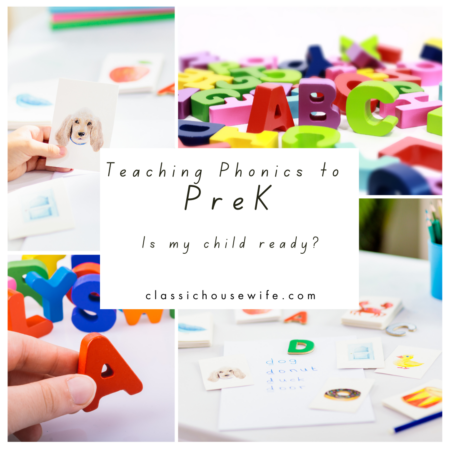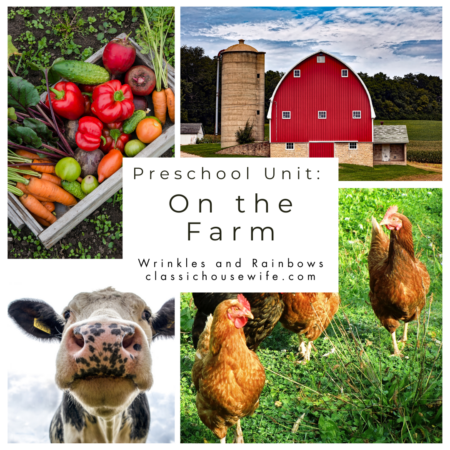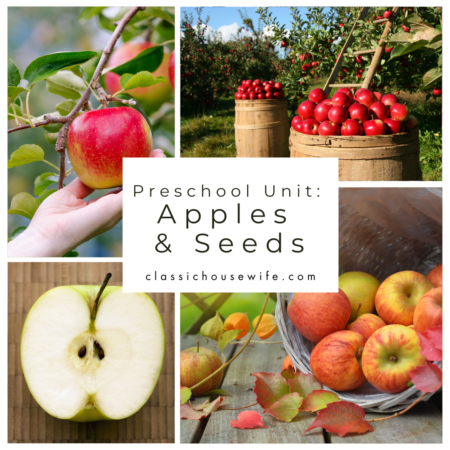Teaching Phonics to Preschoolers

Teaching phonics to preschoolers: are they ready? That’s not a “one size” answer. (Sorry.) Whether your preschooler is ready to learn how to read or not will depend on a few key signs. But first let’s define phonics for the sake of this post. Phonics, simply defined, is the relationship between the written letter and the audible sound made by one or more letters. “Phonics” can also refer to the method/approach of teaching reading using phonics but for the duration of this post, I’m simply referring to the sound that is represented by the letter on the paper. Let’s Start At the Very Beginning (humming the do re mi song) Obviously the first step is teaching the letters of the alphabet. Most kids learn to sing the alphabet around age two, and by age three they probably recognize most of the letters. Some kids simply aren’t interested until they are older and that’s okay! Story time: When my third child was two, he began to recognize and write letters, and by the time he was four he was reading three letter cvc words. Watching his two older sisters he seemed to pick it up rather quickly. But then just as quicky as he started, it came to a stop. He was no longer interested. We switched from “Hare Mode” to “Tortoise Mode” and a couple years later he was ready to make progress again. Learning the alphabet song and writing some letters are not the only signs that a child is really ready to learn to read. So how do you know when your child is ready? Ready, Set, Go! There are several signs of readiness that you’ll see as your child’s brain gets ready to be able to do what it needs to do to learn to read. Things I noticed in all three of my older kids: When you see signs of readiness, you can start testing the waters with fun games to see how your child responds. Remember that too much pressure can squash interest, and young kids learn better while playing! Okay, My Preschooler Seems Ready to Read, So Now What? Yay! Now to the fun part! Teaching your kids to read is really fun. It’s also really frustrating sometimes… but it’s mostly really fun. I enjoy watching the light bulbs light up in their little minds. Some homeschool moms find the idea of teaching reading rather daunting, though. I admit there are a lot of different methods and ideas. It can be a bit confusing. The first thing I want you to remember is this: there are many different ways to teach a child to read; there is no one right way. Also remember that kids learn at different rates, and you’re not on a deadline. Take some of the pressure off yourself! The second thing I encourage you to do is spend plenty of time reading books to your kids. Not in an educational and instructional kind of way — just for fun. While teaching the skills for reading, don’t let them forget that reading is a fun and enjoyable way to spend time with you. As kids begin to learn letters and words, they’ll start to recognize them on the pages more often – especially with their favorite stories that you read again and again. Three Ways to Teach Phonics to Preschoolers Invest in a small variety of physical abc letters to manipulate. Around age 2 when Lil Miss Mouse began recognizing letters, I started buying a variety of inexpensive letter toys like plastic magnetic letters, wooden abc puzzles, and the like. After she learned to recognize the letters we also used them to teach the sounds and start making simple words. We kept this fun, lighthearted, and playful. What I like about these types of resources are they are tangible representations of the letter that your child can hold. Children this age aren’t ready to write but they can line letters up in a row to make a word with ease. One of my favorites that I purchased for Lil Miss Mouse a little over a year ago is this set of wooden letter abc flashcard puzzles. What I love most is that the flashcard is a puzzle for the wooden letter (so it’s very hands on) and the puzzles are self-correcting in that the letter only fits on the puzzle the correct way. Practice what they learn by using matching games. Matching is a skill that young kids learn pretty early, usually by the age of 3. Use that to your advantage to practice and reinforce what your child is learning, in a very game-like way. One example is finding and matching all the same letter from multiple sets, which are most likely using different fonts, and can help your child recognize the same letter when it looks just a little bit different. Another example is using flash cards and asking your child to find the letters of the word in their plastic or wooden letter set. Alternatively, you can use abc stickers and wooden clothespins (or these plastic letter clips,) and ask your child to clip the matching letters to the card. While you’re doing this you will be sounding out and making the words together. Tell them more than you ask them. This is the most important thing to me – I don’t like quizzing young kids with too many questions too soon. While we are learning letters, sounds, and simple words, I do a lot of narrating and demonstrating. Example: “This is the word cat, we need a C first, let’s find the C.” As your kids grow more confident, you can move to “This is the word cat, which letter do we need first? Yes C, which says ‘ck’,” And then later, “Oh, we know this word, will you help me sound it out? Ck-at-cat! Correct, let’s find the next one.” If young kids feel like something is too hard or not very fun, they’re likely
On the Farm, Preschool Unit

Preschoolers love learning about farms! Doing a preschool farm study is a great way to introduce them to some new things outside of their small world. Unless you live on a farm, most four year olds haven’t seen cows and pigs and goats in real life. Also, most kids like animals and baby animals so it’s a win-win. =) “On the Farm” is the second study we are doing for our preschool year. We have several friends with small farms and Lil Miss Mouse adores baby goats, feeding animals, and gardening. This month we will be digging a little deeper and learning a little more. What is a farm? First order of business is defining a farm. The simplest definition is this: an area of land used for growing animals or crops. Farms can be small, run by one person or family, or very large businesses with lots of employees. Farms come in many shapes and sizes. In this unit we will look at some of them. Some Types of farms: Meat and dairy farms grow animals to eat their meat or their milk, such as cows, goats, chickens, pigs, ducks, and turkeys. Milk also is used to make cheese and yogurt. Crop farms grow fruits, vegetables or grains to harvest and eat, such as corn, wheat, carrots, beans, strawberries, or pumpkins. Grains like wheat and corn can eaten whole or ground into flour to make bread. Livestock farms raise livestock for their resources or labor. Alpaca and sheep wool can be sold to make yarn for making blankets and clothes. Horses and donkeys can be sold as work animals. Orchards and tree farms grow trees like apple trees or Christmas trees. Fruit trees like apple, orange, pear, and plum trees take a long time to grow and produce a lot of fruit. Bee farms are called apiaries. Some people have very large bee farms that produce very large amounts of honey and beeswax. A lot of small farms also have small bee farms called hives. Some farms grown one thing, like fish farms, flower farms, and peanut farms. A lot of farms have many different types of things they grow, and family farms often make and sell their own products. Types of farming equipment. All farms need some type of farm equipment and tools. Small farms use smaller tools but they still need something to dig up the ground or harvest it, something to haul supplies, and tools to take care of the animals. When we think of farm equipment, we usually think of the big ones. =) Some of the most common items are: But if you have a kid who really loves big trucks and tractors and all sorts of large machinery, then you can use this list of 20 pieces of farm equipment (with pictures and uses.) Farm animals Livestock farms, dairy farms, and meat farms will have LOTS of animals. They grow lots and lots of animals to make lots and lots of milk, wool or meat to sell. But they might only have one type of animal on their farm. Produce farms may not have any animals at all, although some produce farms also like to have bee hives to help with pollination. Family farms will probably have many different animals and crops. One farm could have cows, horses, goats, sheep, pigs, rabbits, chickens, ducks, geese, and turkeys! The animals you’ll find on the farm depends on the farm you visit! Vegetables and Fruits Did you know that we tend to identify fruits and vegetables by whether or not they are sweet or savory? But there is a botanical definition for “fruit” that actually makes some our favorite veggies classify as fruits! Botanically speaking, a fruit is produced from a flower and plays a role in the plant’s reproduction, whereas a vegetable can be any part of a plant and does not. This means that our savory squashes and beans are technically FRUIT – at least as far as plant botany is concerned. For the purpose of this lesson, since we will use the botanical definition, and when we are cooking, we can use the culinary definitions. =) Dairy Products Dairy products are all things that are made from milk. These can be made from cow milk, goat milk, or any type of milk. Milk, cream, butter, cheese, yogurt, and cottage cheese are all dairy products. Did you know that you can make your own cheese, butter, yogurt, and cottage cheese at home? Using raw milk is best but you can use pasteurized milk from the grocery store, too! Milk has healthy fats, vitamins, and protein for our bodies. Meat products Some young kids don’t know which types of meat come from which types of animals. And some don’t realize the meat at the store comes from animals at all! Take a trip to the meat section at the grocery store or a butcher shop and talk about the different types of meat you can buy. Activity: Make playdough turkey legs, hamburgers, chicken nuggets and more, while discussing what meats come from which animals. (Use the poster in my farm kit for reference. See below.) Farm to Table: There are many ways of getting food from the farm to your table. The most important thing to remember is that everything comes from a farm, big or small, and without farms we wouldn’t have food! Farming is hard and dirty but it’s very important work. If you have a small garden or farm in your yard, you’re doing important work, too! Ways food gets from the farm to our table: How many different ways have you gotten food from a farm? Can you try a new way like visiting a you pick farm or a butcher shop? On the Farm Preschool Unit Study I have a companion study kit in the shop that goes along with this unit study. In this kit you’ll find some printable posters, some worksheets, some activities, and some recipes. On the Farm
Preschool: Apples & Seeds Unit

*This post contains affiliate links.* Apples, seeds (and a little bit of pears and other fruit trees.) These are the things that we are studying in our first preschool unit! As I’ve mentioned, the majority of our preschool approach is “books, hands on activities, and nature study.” While using apple and seed themed materials to work on reading, writing, and math, we are also learning about science, art, cooking, gardening, and handicrafts. Picture Books for Apples and Seeds (And More) Apple Math Activities Use a set of Mini Artificial Apples for sorting, counting, less/more/equal, adding, and subtracting. Use these along with my apple-themed flash cards or worksheets to make math tangible. Set up an invitation to play, with sticks and leaves as well, for making apple trees and counting their apples. Use play dough to make apple slices and little black apple seeds for the slices. Count and add the seeds together. Cut 2-3 real apples into wedges, count the wedges and the seeds. Divide the apples into groups onto plates for snack time along with raisins and nut butter. Print and use these pattern strips in apple/fall themed colors to learn and practice patterns. Preschool Apple Science Cooking and Baking with Apples Apple Crafts, Art, and Other Projects I have a Pinterest board FULL of apple themed projects, crafts, recipes, snacks, activities, art, science, and more. Take your pick and find inspiration from over 39 pinned ideas. Some of my favorites are the sensory bin ideas and the apple pie scented cloud dough. You can also try your hand at making an apple scented dried flower potpourri by using apple essential oil and cinnamon essential oil. Additionally, take the learning outside of the home by taking your child shopping for the apples and ingredients, weighing the apples, bagging them, etc. Take a trip to the library to look for books about apples, apple orchards, apple picking, and so on. If you live in an area with apple orchards – go visit! We do not, so we picked pears from a friend’s pear tree (it’s kind of the same, right?) Have fun learning about apples! Stay tuned for the next unit, “On the Farm.” Subscribe to Posts Signup for new updates and special offers and receive the Pre-K Letters Pack for free! Subscribe Loading… Thank you! You have successfully joined our subscriber list.
